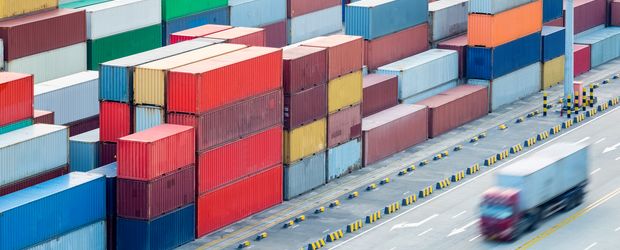Latin American trade balance records lowest deficit in 16 months
by Hans Diederichs

Latin America registered its lowest commercial rolled steel deficit in 16 months, although there is a cumulative deficit of 2.0 Mt in rolled steel production compared to the first seven months of 2018. The share of imports in regional consumption closed the semester in 36%, after three consecutive months in 37%, same percentage seen between January-June 2018. The deficit registered in January-June 2019 was 6.94 Mt, with 10 thousand tons less than January-June from the previous year (6.95 Mt).
In addition to the decrease in the share of imports in real consumption, Latin American consumption itself has been reduced, especially for rolled products. This factor, combined with political uncertainty and economic slowdown, represents one of the main elements that drive the low activity of the steel industry in Latin America.
In this scenario, with the worst indicator since February, steel consumption in Latin America fell 11.75% in June compared to the same month of 2018, 7% less than in May 2019 and 3% in the accumulated compared to the first half of 2018. The result was 4% lower than the average of the first 5 months of the year, and the countries that led half of this regional decline in June were, precisely, Mexico and Argentina. Both decreased their steel consumption by 10% compared to May, by 5.8% and 14.7%, respectively, compared to the same month of 2018. Regional production of crude steel and rolled steel until June fell 5% and 6%, respectively, in the same comparison to the first six months of the previous year.
Imports: lowest index since February
Latin American imports of rolled steel registered their lowest rate since February 2018 (1,694 Mt), reaching 1,699 Mt in June. The region fell its imports by 17.5% between May and June 2019, presenting a 2% decrease compared to January-June 2018. The largest falls were observed in Mexico (180 thousand tons) and Brazil (60 thousand tons), totalling a fall of 240 thousand tons in rolled steel imports. The share of imports over consumption totalled 36% in the year, compared to 35% was observed in the second quarter of 2019.
Exports continue to fall
Rolled steel exports in the region fell 9% from May to June and registered a 6% decrease in the accumulated of 2019. Almost half of this decrease was represented by Brazil (46%), which exported 45 thousand tons less compared to last May. Argentina represents the second largest fall (28%), which corresponds to 27 thousand tons.
Trade balance indicates growth opportunity
Imports of rolled products from Latin America have experienced a fall almost four times greater than the contraction seen in exports, and the deficit reduction has been the lowest since February 2018. Brazil and Argentina were the only ones to reach a positive balance 1.2 Mt and 124 thousand tons, respectively, showing a large gap in investments in manufacturing infrastructure to build its economic recovery. Mexico, with a negative balance of 3.5 Mt, represents the largest regional deficit (50% of the Latin American total), which is accompanied by decreases in production.
Worst production of crude steel in 31 months, plus positive outlook for rolled steel
In July, Latin American crude steel production recorded its worst index since December 2016, declining 5% not only with respect to the previous month but also in the year. The fall was largely driven by the cut of 373 thousand tons in the production of Brazil, which saw its index reach a record low. Compared to July 2018, the fall in Latin American production was 15%.
Rolled steel production in July was already 0.4% higher than the average of the first semester, indicating a slightly positive outlook for the second semester, but 6% lower so far this year. Compared to 2018, Mexico maintains a 69% share of the regional deficit, registering in July a result 2% below the average of the first semester. The country represents 20% of the 5% drop in Latin American rolled steel production in July compared to the same period last year.
Source: Alacero Latin American Steel Association Photo: Fotolia

